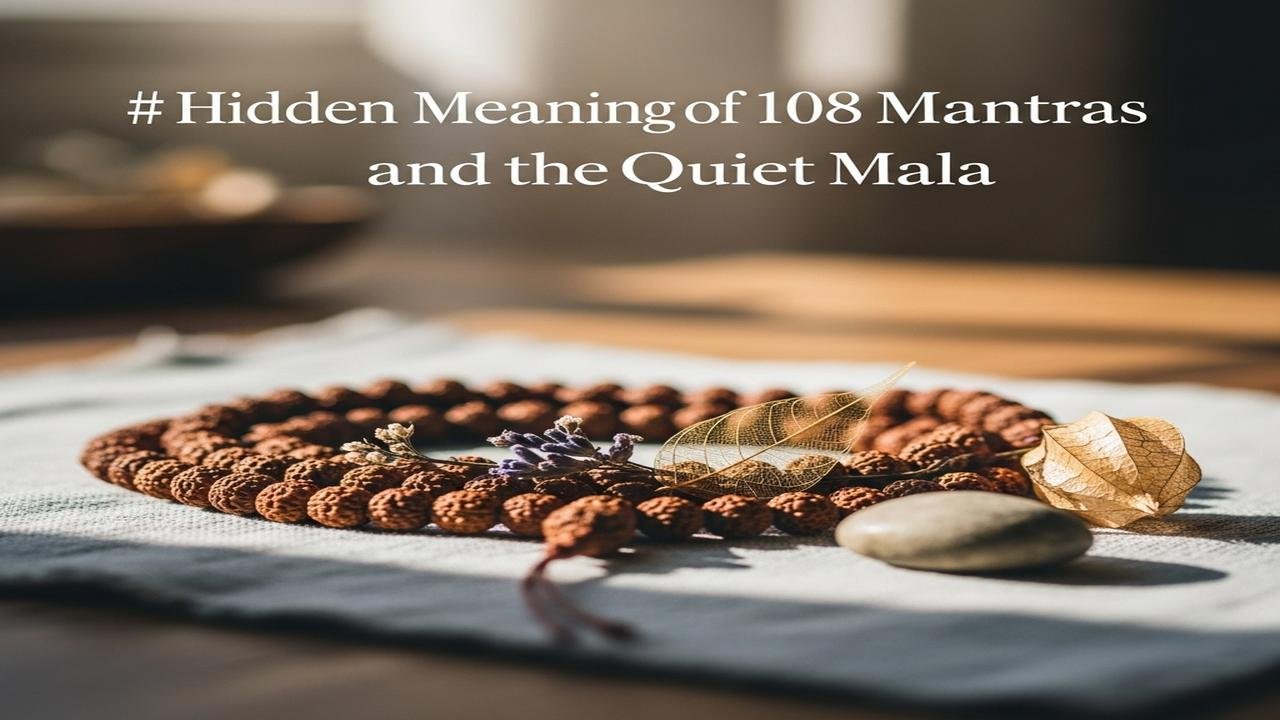Hidden Meaning of 108 Mantras and the Quiet Mala

The Quiet Circle: Why We Chant Mantras 108 Times
When I first held a worn rudraksha mala in my grandmother’s hands, she smiled and said, “Start with one hundred and eight.” The beads were smooth from decades of prayer. As I moved each bead between my fingers, I felt a simple rhythm settle in my chest. That gentle repetition was not just habit. It was a story, a practice, and a bridge to something larger than myself.
Across Indian homes and temples, you will find people chanting a mantra 108 times. At first glance, the number may seem arbitrary. But the number 108 is steeped in meaning—astronomical, mathematical, spiritual, and cultural. It appears in the names of gods, in the list of sacred texts, and in the circular shape of the mala itself. Each bead invites a small step toward inner focus.
Why 108? One way to see it is through relationship: 12 zodiac signs multiplied by 9 planets gives 108 — a link between the cosmos and our personal life. The 27 lunar constellations (nakshatras) times 4 quarters of each gives 108, reminding us of time and cycles. There are also 108 traditional names of many deities and 108 Upanishads in some ancient lists. These connections create a tapestry of meaning that fills each repetitive chant with depth.
Traditionally, a mala has 108 beads plus a larger “guru” bead. Chanting around the mala keeps the practice steady and measurable. Many teachers say that completing 108 repetitions brings the mind to a restful, meditative place. This is not magic but steady attention. The mind learns a rhythm, and through repeated sound and breath it softens.
The practice belongs to daily life as much as to temples. A farmer might chant a few rounds before dawn; a student may repeat a short mantra before exams for steadiness; a devotee may gather with friends to chant collectively, feeling warmth and unity. Chanting together amplifies devotion, because voices woven into a single sound create a shared field of calm.
There is also a gentle science to it. Repetition trains focus, calms nervousness, and brings the breath into a steady pattern. In this way, mantra becomes a simple tool for attention, turning scattered thoughts into one steady thread. When the words are sung or whispered with devotion, they move past intellect and touch the heart.
How to bring this practice home? Here are some simple, respectful steps:
- Choose a short mantra or name of the deity that resonates with you.
- Use a mala of 108 beads. Hold one bead between thumb and middle finger; do not cross the guru bead.
- Set an intention—whether peace, healing, gratitude, or devotion—before you begin.
- Chant with breath: one repetition per in-breath and out-breath or one per full breath, whichever feels natural.
- If 108 feels too long to start, try 27 or 54 and build gradually. Consistency matters more than speed.
Like any sacred practice, chanting is both private and public, simple and profound. It ties the individual to a long line of seekers. Each bead passed is a small act of faith, a reminder that slow, steady devotion can change how we feel and face the world.
Conclusion
In the quiet turning of the mala, 108 becomes more than a number—it becomes a way to slow down, to remember, and to open the heart. Take a bead, breathe, and let the rhythm gently lead you home.
